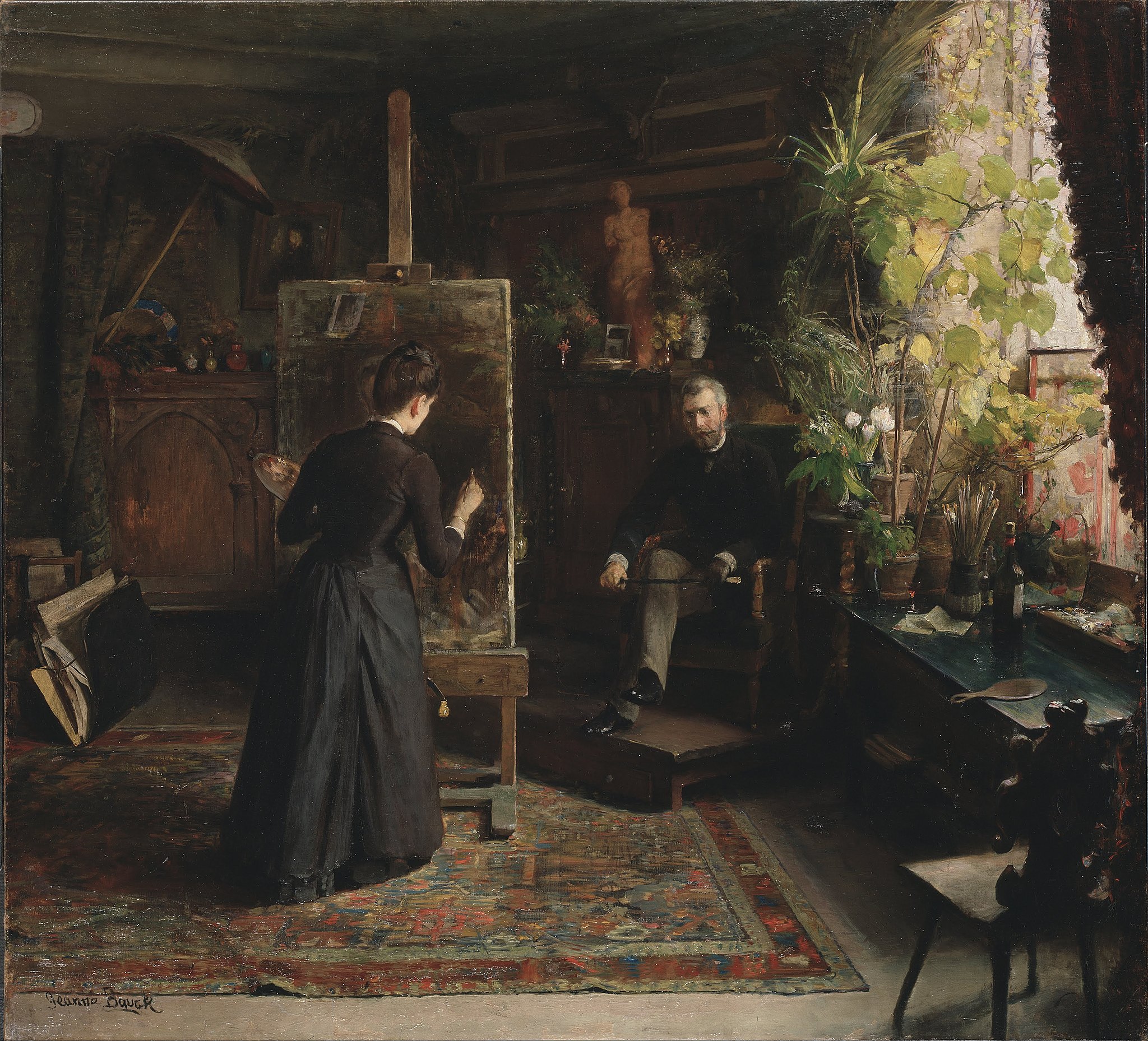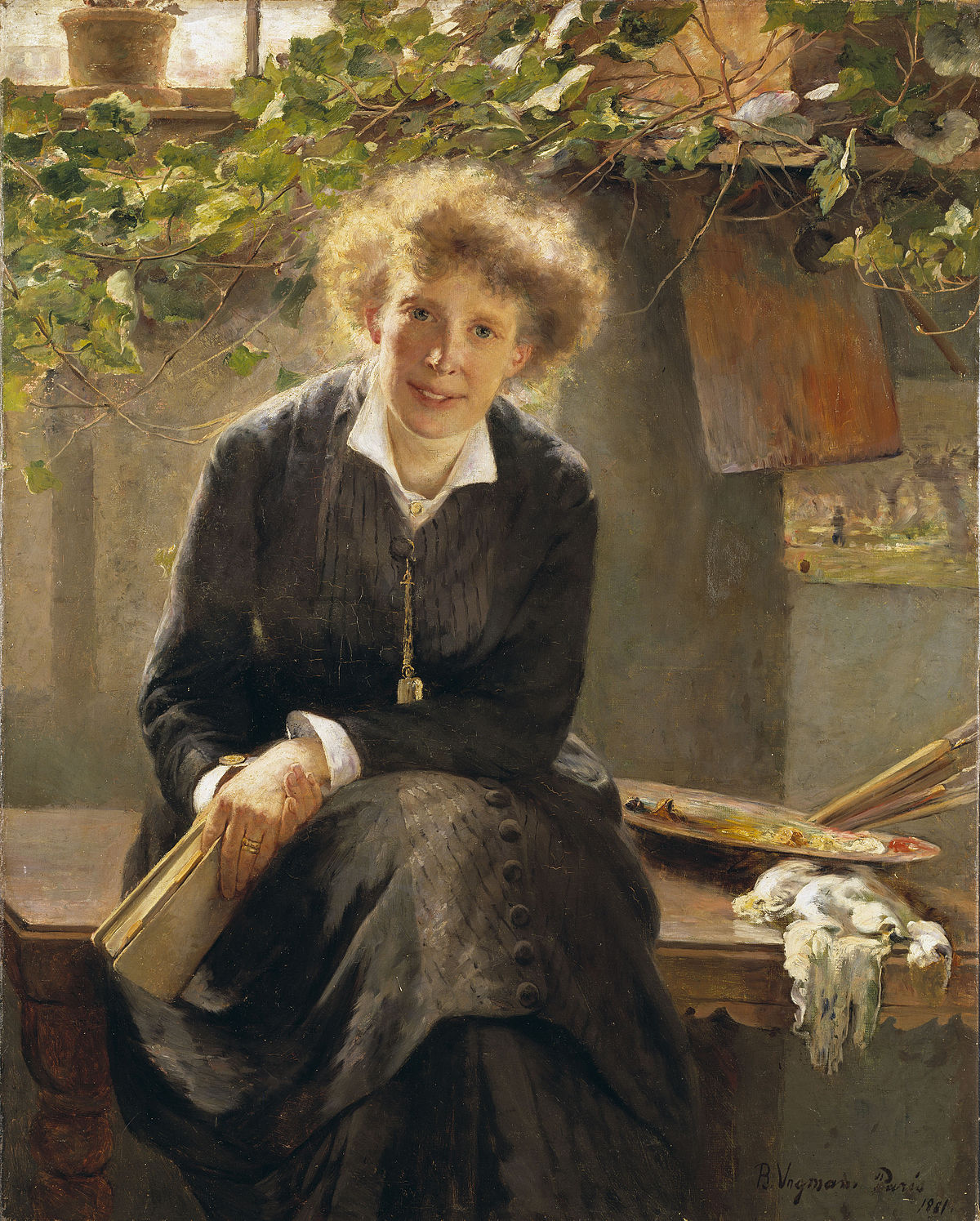Today we start our monthly feature with Nationalmuseum in Stockholm - for the next four Sundays we will be presenting the masterpieces from their magnificent collection. We hope you will like it! :)
This is an epoch-making image from the end of the 1870s, when women artists and writers had a major influence on the cultural life of the period. They managed to change both the view of the role of the artist and that of middle-class family life.
Here Jeanna Bauck has chosen to depict a female artist in the middle of the creative process. She portrays Bertha Wegmann fully absorbed in her work at the easel, in their shared studio and home in Munich in Germany. Wegmann, who was to become one of Denmark’s foremost portraitists, later painted Jeanna Bauck in their studio in Paris in 1881. In that painting, she managed to combine the free, independent woman of the time, The New Woman, with the refinement of middle-class femininity. Around this period, artists painted countless portraits of their friends and colleagues, but it was only the women who portrayed each other in their professional role. The will to create art was acknowledged as being paternal within a patriarchy, and as long as patriarchal societies were considered natural, it was unnatural and unfeminine for a woman to be an artist.
In the 19th century a hierarchical division between public and private space was established (and still exists today in some form). In modernist art history, the home was described as a timeless zone; the so-called women’s sphere was regarded as a static stage in relation to the narrative of modernity taking place in the public space of the dynamic metropolis.
At the time, because middle-class women were not able to move freely in the streets, women artists had to depict modernity from differing social spaces than their male colleagues. One can see in their images which spaces were open for their portrayals. Paintings by the Nordic female artists show that they literally did not move beyond the studio: it was both their home and place of work. A social space associated with professional life and thereby with the public realm. In their portraits, the studio represents at once a space of endless possibilities, but also the absolute limit of their world. They chose not to paint the modern city outside, in contrast to the female artists of the avant-garde, who depicted modernity from balconies and theater boxes.


 Jeanna Bauck
Jeanna Bauck